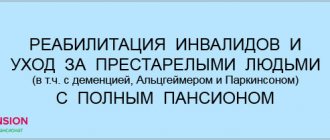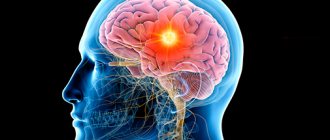Absolute contraindications
Anamnestic
- Serious head injury or stroke in the previous three months.
- Previous intracranial hemorrhage (hemorrhagic stroke, subarachnoid hemorrhage, traumatic hematoma).
- Intracranial neoplasm; arteriovenous malformation or cerebral aneurysm.
- Intracranial or intraspinal intervention in the last 6 months.
- Puncture of a noncompressible artery in the last 7 days.
Clinical
- Symptoms indicating subarachnoid hemorrhage.
- Persistent increase in blood pressure (systolic ≥185 mm Hg or diastolic ≥110 mm Hg).
- Blood glucose <2.8 mmol/l.
- Ongoing internal bleeding.
- Acute bleeding diathesis, including, but not limited to, conditions defined as "hematological".
Hematological
- Platelets <100 G/L*.
- Currently taking anticoagulants with INR >1.7 or PT (prothrombin time) >15 seconds*.
- Administration of heparin in the previous 48 hours in combination with an increase in aPTT*.
- Taking direct thrombin inhibitors or direct inhibitors of coagulation factor Xa in combination with signs of their anticoagulant effect according to laboratory tests such as APTT, INR, ECT, TV or an adequate assessment of Xa activity.
CT scan of the brain
- Signs of hemorrhage.
- Signs of involvement of multiple lobes of the brain, decreased X-ray density extending to >33 percent of the cerebral hemisphere.
Own results
Below is data describing the experience of one doctor. The counting of thrombolytic procedures used began in June 2021 (Fig. 1). In total, from June to December 2021, 44 TLT procedures were performed, from January to July 2021 - 37, thus, in total, during the period under review, this procedure was performed 81 times.
An analysis of the possibilities of use and effectiveness of TLT was carried out on the basis of data obtained for the period from January to July 2021.
Note that we were able to use TLT to help patients with IS only in 30% of cases. What factors have limited the use of TLT?
According to researchers of this problem [3], such factors are:
time of initiation of therapy;
the presence and size of a brain region with potentially reversible changes;
features of systemic and local hemodynamics;
hemostasis factors;
sensitivity of the brain substance to ischemia;
the degree of damage to the blood-brain barrier [3].
The time factor, which comes first in this list, is determined by the presence/absence of a window of therapeutic opportunity (4.5 hours from the onset of stroke). Our observations confirm its significance among all the obstacles limiting the use of TLT: out of 103 patients hospitalized by us with a diagnosis of IS, 52 (50.5%) were outside the therapeutic window (Table 1). However, in most cases, even with a window of therapeutic opportunity, we had to act under deadline conditions, since in real conditions we are often faced with the simultaneous admission of several patients requiring immediate examination and diagnostic procedures. The objective difficulties associated with this lead to inevitable losses of already strictly limited time. The speed and coherence of the actions of the medical staff involved in the TLT procedure and the uninterrupted operation of diagnostic equipment are of great, often decisive importance. Table 1 provides data illustrating the relationship between the time factor and other factors that impede TLT. Thus, the impossibility of performing thrombolysis in 17.5% of cases was associated with the presence of such contraindications in patients as uncontrolled arterial hypertension, trophic disorders in joints and limbs, and blood clotting problems. In approximately 2% of cases, we encountered patients refusing TLT.
In addition to the time factor, the presence of contraindications, the consent of the patient and his relatives when performing TLT, it is important to take into account the age of the patients. According to the instructions for use of the drug alteplase, the recommendations of the European Stroke Organization, and the Russian clinical guidelines for thrombolytic therapy for ischemic stroke [5], patients under 18 years of age should not undergo TLT, and patients over 80 years of age —
carry out with extreme caution. Most researchers agree that TLT in people over 80 years of age is not associated with an increase in complications, such as hemorrhagic transformation of the brain lesion, and, therefore, does not lead to an increase in mortality [6]. A good degree of recovery of impaired neurological functions (26–30%) serves as evidence that thrombolysis in patients aged 80–89 years and 90–99 years is equally safe and effective [6].
Regarding young patients (up to 45 years), data are provided indicating a more favorable outcome of the disease with a low incidence of symptomatic hemorrhagic transformation and a better degree of restoration of impaired neurological functions [6]. On this basis, it is concluded that TLT is effective and safe in all age groups. However, the older the patients, the higher the number of functionally unfavorable outcomes and deaths [6].
Further in our work, we tried to trace the relationship between the effectiveness and safety of TLT and the gender and age of patients. The results of TLT were assessed as follows:
positive dynamics—regression of neurological deficit with successful recanalization and reperfusion;
lack of dynamics - no changes are observed due to the lack of recanalization and/or the development of irreversible damage to the brain substance in the lesion;
negative dynamics - clinical deterioration (manifested by the development of complications, primarily hemorrhagic, reocclusion or re-embolism, or an increase in cerebral edema in case of insignificant effect of TLT).
Table 2 presents data that allows us to trace the relationship between the effectiveness of TLT and the gender and age of patients. We divided our patients into 6 age groups: 1st (20–49 years), 2nd (50–59 years), 3rd (60–69 years), 4th (70–79 years); 5th (80–89 years), 6th (90 or more years). The effectiveness and safety of TLT (positive dynamics, no dynamics, negative dynamics, absence/presence of allergic reactions) was assessed based on the results of daily observation. According to Russian clinical guidelines for thrombolytic therapy for ischemic stroke, it is necessary to monitor the dynamics of the neurological status during the day; Positive dynamics during the first 24 hours after TLT, as a rule, predict subsequent good recovery [5].
Summarizing our observations, we can provide the following data.
The total number of patients who underwent the TLT procedure was 37. There were no cases of an allergic reaction.
The number of men and women among our patients turned out to be almost equal (19 and 18 people, respectively).
The oldest age group (90–99 years) is represented by a single patient - a 92-year-old woman, who, as a result of TLT, showed positive dynamics (restoration of facial expression and speech disorders).
The largest group (10 people) are patients aged 60–69 years, the number of men and women is the same. The results of TLT in each of the subgroups were the same: in 4 men and 4 women, complete or partial restoration of impaired functions was noted (positive dynamics); in 1 man and 1 woman there was no dynamics (no changes occurred); the TLT effectiveness rate in this group is the highest - 82%; No negative dynamics were observed among representatives of this group.
According to the effectiveness of the thrombolytic procedure, age groups can be ranked as follows:
60–69 years old - 82%;
20–49 years old - 80%;
50–59 years old - 75%;
70–79 years old - 43%;
80–89 years old - 33%.
(The group of 90–99 years old, consisting of 1 person, is not included in the rating.)
Cases of negative dynamics with a fatal outcome were noted in 2 groups (70–79 years old and 80–89 years old): a 79-year-old woman and an 84-year-old man. However, in both cases, according to the pathological and anatomical study, a direct connection between the death and the TLT procedure was not established. In the age group of 80–89 years, there was 1 case of hemorrhagic transformation (in an 88-year-old man).
The total number of women who experienced complete or partial recovery of impaired functions after TLT (14 people, 58%) exceeds the number of men with positive dynamics (10 people, 42%).
The overall effectiveness of TLT is quite high and amounts to 64.9% (24 people out of 37) against 8.1% (3 people) of cases of negative effect and 27% (10 people) of the absence of any effect of this procedure.
Throughout the world, ischemic stroke (IS) remains a problem of extreme medical and social significance due to the high rates of its development, mortality and disability. Modern technologies for the treatment of IS include the use of highly effective methods of reperfusion of the brain substance in the first hours of the disease, aimed at restoring blood flow in the affected vessel, which makes it possible to prevent the development of irreversible damage to the brain substance or reduce its volume, i.e. minimize the severity of residual neurological deficit.
Systemic thrombolytic therapy (SLT) using recombinant tissue plasminogen activator (rt-PA, alteplase) is the most effective and safe method of reperfusion therapy for IS in the first 4.5 hours from the onset of the disease [1, 2].
Carrying out TLT in patients with IS became possible thanks to the introduction of computed tomography (CT) into clinical practice, which made it possible to reliably diagnose the nature of the stroke [3], although individual reports of the administration of fibrinolytics such as streptokinase and urokinase to patients only on the basis of the clinical picture of IS were noted before [4, 5].
The first thrombolytic, the safety and effectiveness of which was studied in randomized controlled trials in IS, was streptokinase. Studies (MAST-I, MAST-E, AST) in which this drug was used for thrombolysis were stopped early for ethical reasons - due to the high incidence of symptomatic hemorrhagic transformations (SHT) [6–8].
Alteplase is rapidly cleared from circulating plasma, the rate of this process is 550–680 ml/min [9]. The pharmacokinetics of alteplase have been studied in healthy volunteers, as well as in patients with myocardial infarction [10]. These studies indicate that the drug is rapidly cleared from plasma, with an initial half-life of less than 5 minutes (similar to natural tissue plasminogen activator). The dose of alteplase currently used for the treatment of IS was selected during two open-label dose-finding studies of the safety of the drug [11, 12].
The NINDS (National Institute of Neurological Disorders and Stroke) study was the first multicenter, randomized, placebo-controlled study to demonstrate the safety and effectiveness of systemic TLT using rt-PA in the first three hours from the onset of the disease [13]. Subsequent randomized placebo-controlled studies, ECASS I (European Cooperative Stroke Study) and ECASS II [14, 15], assessed the safety and effectiveness of rt-PA at different doses (ECASS I - 1.1 mg/kg; ECASS II - 0.9 mg/kg) within a period of up to 6 hours from the onset of stroke. The safety results of rt-PA in the ECASS I and ECASS II studies were comparable to those obtained in the NINDS study, but there were no significant differences in efficacy between the study group and the placebo group. Two parts of the ATLANTIS study (A and B) were conducted to evaluate the safety and effectiveness of rt-PA at a dose of 0.9 mg/kg within 5 hours of the onset of the disease. However, there was no significant positive effect of rt-PA compared to placebo [16].
The ECASS III study [17] demonstrated the safety and effectiveness of systemic thrombolysis within 4.5 hours from the onset of symptoms, which led to a revision of the European and American recommendations for the treatment of IS with an increase in the duration of the therapeutic window for systemic thrombolysis to 4.5 hours [12]. In the Russian Federation, corresponding changes to the instructions for the drug alteplase were made on May 25, 2011, according to which systemic TLT became possible in the first 4.5 hours from the onset of the disease.
The IST III trial, the largest study conducted in stroke using TLT [18], assessed the safety and effectiveness of systemic TLT using rt-PA for stroke in the first 6 hours from the onset of the disease. The results of the study were also considered neutral, since the primary end point was not achieved - the predominance of individuals with good recovery of impaired functions according to the Oxford scale in the group of patients receiving TLT. Thus, at present, the positive evidence base for the use of alteplase in patients with IS is represented by the results of two large studies - NINDS and ECASS III.
Possible options for the clinical course of the disease and outcomes during reperfusion therapy: regression of neurological deficit upon achieving recanalization and reperfusion, absence of any changes (due to lack of recanalization and/or development of irreversible damage to the brain substance in the lesion), as well as clinical deterioration associated with the development of complications, primarily hemorrhagic, reocclusion or re-embolism, or an increase in cerebral edema in case of insignificant effect of TLT. Thus, the safety and clinical effectiveness (or lack thereof) of reperfusion therapy in patients with IS may be influenced by many factors related to the time of its initiation, the presence and size of the brain region with potentially reversible changes, features of systemic and local hemodynamics, hemostasis factors, individual sensitivity of the brain substance to ischemia, the degree of damage to the blood-brain barrier.
The dependence of the effectiveness of fibrinolytic therapy and its safety on the time factor has been demonstrated in a number of large studies. In a pooled analysis of the NINDS, ECASS I and II, and ATLANTIS studies, which included 2775 patients, it was shown that the odds ratio (OR) for a favorable outcome of the disease when thrombolysis was started in the first 90 minutes of stroke was 2.81 (95% confidence interval [CI] - 1.75–4.5), whereas in the case of alteplase administration in the period from 90 to 180 minutes – 1.55 (1.12–2.15). With a further increase in the time from the onset of the disease to therapy, the OR indicator decreased significantly: 1.40 (1.05–1.85) when TLT began in the period from 181 to 270 minutes and 1.15 (0.90–1.47) in the case of rt-PA administration after 271–360 minutes [19].
Thus, the time factor is the most obvious and important condition affecting the outcome of the disease during TLT [20]. All recommendations for the treatment of stroke patients emphasize the extreme importance of reducing all delays associated with the initiation of fibrinolytic therapy [1, 2].
There are also certain age restrictions when performing TLT. According to the instructions for the drug alteplase and the recommendations of the European Stroke Organization, there are certain age restrictions on the use of this drug - its use is not indicated for stroke patients under 18 years of age, and TLT should be performed with extreme caution in persons over 80 years of age [1].
While global experience with the use of rt-PA in children and adolescents with IS is limited and includes several case series descriptions [21], thrombolysis in patients of the older age group (80 years and older) is currently considered routine practice both in the USA and in a number of European clinics [22, 23]. Most researchers agree that TLT in people over 80 years of age is not associated with an increase in complications, such as hemorrhagic transformation (HT) of the brain lesion, and therefore does not lead to an increase in mortality [22]. However, in general, this age group has higher rates of mortality and disability compared to patients under 80 years of age, since age is an independent factor in increasing mortality in stroke [24].
In the work of F. Mateen et al. The results of TLT of patients in the age groups from 80 to 89 and from 90 to 99 years were separately analyzed based on the Canadian TLT registry [23]. Both groups of patients were characterized by a predominance of females (61% in the group 80–89 years old and 77% in the group 90–99 years old) and initially severe stroke (NIH Stroke Scale score more than 15 points in 52 and 58%, respectively). The results showed that both groups had similar rates of OHT (4 and 7%, respectively), 3-month mortality (33 and 52%, respectively), and a good degree of functional recovery of impaired neurological functions (26 and 30%, respectively). Thus, thrombolysis in both octogenarians and 90-year-old stroke patients is characterized by similar safety and efficacy indicators.
However, despite the seemingly convincing and extensive data on the safety of TLT for people over 80 years of age, a 2010 Cochrane meta-analysis of systemic thrombolysis, which included 7152 stroke patients from 26 randomized controlled trials, showed that Currently, there is insufficient convincing evidence to increase the upper age limit for fibrinolytic therapy [25]. This result was due to the very small number of patients over 80 years of age (approximately 1%) included in the meta-analysis.
The safety and effectiveness of TLT for young stroke patients (less than 45 years of age) have been separately analyzed in a number of studies [26, 27]. Indeed, the results of this method of treating young patients are of particular interest due to the different ratio of risk factors and pathogenetic variants of IS in this age group compared to patients over 45 years of age.
A subgroup analysis of the results of the SITS-MOST registry showed that young patients after TLT have a more favorable outcome with a low incidence of OHT [26]. In a study by J. Putaala et al. a better degree of functional recovery of impaired neurological functions was also demonstrated in people under 45 years of age (40% compared to 22% in the group of patients over 45 years of age); the frequency of HT did not differ significantly when comparing these groups [27]. Thus, the results of the above studies indicate that the TLT method is effective and safe regardless of the age group, although in general, with increasing age, there is a greater number of functionally unfavorable outcomes and an increase in mortality.
GT of the brain lesion in IS is a serious complication, especially when performing TLT. M. Pessin et al. first proposed to introduce a distinction between hemorrhagic infarction and parenchymal hematomas based on CT data [28]. Studies using CT and magnetic resonance imaging have established that HT of the petechial hemorrhage type occurs in 15–45% of patients [29], and with the formation of symptomatic parenchymal hematoma - in 5% [30].
The NINDS study clearly articulated the differences between types of HT. Hemorrhagic infarction was defined as a hypodense zone with hyperdense point inclusions with unclear contours within the ischemic zone. Parenchymal hematomas were defined as typical homogeneous hyperdense formations with clear contours with or without mass effect [31]. The ECASS research group made its own amendments to the classification of HT [32]. It was proposed to distinguish between hemorrhagic infarction of types 1 and 2, as well as parenchymal hematomas of types 1 and 2. Hemorrhagic infarction is defined as petechial permeation of the area of ischemic injury without a mass effect. In turn, type 1 hemorrhagic infarction is defined as small petechiae in the ischemic area, type 2 – confluent petechial hemorrhages in the ischemic area. Parenchymal hematomas were defined as hemorrhages with mass effect. Types 1 and 2 hematomas are defined as those occupying <30% of the ischemic volume with minor mass effect and >30% of the ischemic volume with significant mass effect, respectively. Hemorrhages at a distance (multifocal or single) from the focus of ischemic damage were allocated into a separate group.
In the NINDS study, this complication was observed in 1.3% of patients. In the ECASS I and ECASS II studies, hematomas distant from the ischemic focus occurred in 23 (3.7%) of 620 and 16 (2.0%) of 800 patients, respectively.
Any factors leading to increased permeability of the blood-brain barrier can cause the occurrence of HT during TLT. In a study by T. Neumann-Haefelin et al. [33] assessed the influence of the severity of leukoaraiosis on the development of HT during TLT in patients with IS. Symptomatic intracranial hemorrhage was significantly more common among patients with a Fazekas leukoaraiosis score of 2 or 3 (12 of 114 patients; 10.5%) compared with patients with minor leukoaraiosis (13 of 335; 3.8%) ( OR=2.9; 95% CI – 1.29–6.59; p=0.015). Logistic regression analysis showed that leukoaraiosis is an independent prognostic factor for the development of OHT during TLT in patients with IS.
Early signs of ischemia on brain CT (hypodense changes in the brain matter, loss of contrast between gray and white matter in the convexital cortex, and signs of swelling of the brain matter - smoothing of the sulci and compression of the cerebral ventricles) were also associated with an increased risk of developing symptomatic intracranial hemorrhages during TLT [ 34, 35].
The volume of hypodense changes in the brain substance remains a risk factor for the development of symptomatic intracranial hemorrhages during TLT in patients with IS. To assess the volume of ischemic damage, the use of ASPECTS (Alberta Stroke Program Early CT Score) criteria is recommended [36]. It was shown that a low ASPECTS score (<7) was associated with an increased risk of developing symptomatic intracranial hemorrhage [37].
Conducting TLT in patients with IS in the vertebrobasilar system (VBS) has significant features [38–40]. One of the most debated issues, which fundamentally influences the tactics of reperfusion depending on the affected area, is the duration of the therapeutic window during which TLT is safe and appropriate. There are a number of features of the structures of the brainstem and cerebellum, as well as their blood supply, that determine the characteristics of reperfusion therapy for patients with IS in VBS.
Despite numerous case series descriptions of reperfusion therapy in patients with vascular lesions of the SHD, mainly the basilar artery (BA), to date, not a single large randomized study has been conducted to evaluate the safety and effectiveness of TLT depending on the affected area.
The question of the choice of tactics for reperfusion therapy for OA lesions (systemic thrombolysis or endovascular interventions) still remains open. The largest prospective study currently comparing different reperfusion regimens for OA lesions is the BASICS (The Basilar Artery International Cooperation Study) registry [41]. Three treatment options were compared: antiplatelet and anticoagulant, systemic and intra-arterial TLT, thromboembolectomy and stenting in various combinations. Of the 592 patients included in the study, 68% (402) had a poor outcome (Modified Rankin Scale score 4–5 or death). It was found that patients with mild to moderate symptoms treated with antiplatelet drugs and anticoagulants have approximately the same risk of adverse outcome as patients with systemic TLT and intra-arterial therapy. While in patients with severe stroke, the risk of adverse outcome was lower with reperfusion therapy compared with antiplatelet drugs and anticoagulants. However, no significant differences in outcomes were shown between different types of reperfusion therapy.
Thus, given the lack of significant differences in outcomes when performing systemic and selective TLT in patients with OA occlusion, the question of the advisability of increasing the time from the onset of the disease to reperfusion therapy is relevant, and therefore the most optimal option may be combined reperfusion therapy. This approach would allow treatment to begin in a shorter period of time and take advantage of both reperfusion methods. Intravenous thrombolysis, as the fastest and technically simplest method, can be carried out at the first stage of therapy in clinics that are not equipped with an x-ray surgery service, with subsequent transportation of the patient to a specialized center for endovascular intervention if there is no effect from intravenous thrombolytic administration. The results of studies have been published demonstrating the feasibility and safety of such a scheme (drip, ship, retrieve) for patients with IS [42]. Taking into account the possibility of providing reperfusion therapy to patients with vertebral-basilar stroke in a wider therapeutic window, a similar organizational scheme with multi-stage therapy could become preferable for this pathology. T. Pfefferkorn et al. (Germany) analyzed various schemes for transporting patients for reperfusion therapy for OA occlusion [43, 44]. One scheme involved transporting patients with OA occlusion verified by CT angiography from a primary stroke center to a specialized one for the purpose of further selective TLT. As part of another scheme, the patient was transported to a specialized center after systemic TLT with rt-PA at a standard dose (0.9 mg rt-PA/kg). In a specialized center, after emergency CT angiography was performed in case of persistent OA occlusion, mechanical thromboembolectomy (MTE) was performed using MERCI retriever, AngioJet and Penumbra devices. When comparing these approaches, no differences were found between them in the frequency of recanalization. In the group with intra-arterial thrombolysis, the rate of OA recanalization was 92% (24 of 26); in the group with the intravenous TLT–MTE regimen – 85% (22 out of 26). Moreover, in 38% of cases, recanalization was achieved after intravenous administration of rt-PA, and further MTE was not required. And in the case of ineffective systemic TLT, the OA was recanalized using MTE methods in 75% of cases. There was no difference in the effectiveness of different MTE devices for OA occlusion. Despite the fact that there were no significant differences in the frequency of OA recanalization using these two regimens, the groups differed significantly in functional outcome by the 3rd month from the onset of the disease (4.7 points on the modified Rankin scale in the intra-arterial TLT group and 3.4 – when using systemic TLT followed by MTE).
The combination of intravenous thrombolysis and thromboembolectomy has been shown in small studies to be the most promising reperfusion therapy regimen for OA occlusion. It is possible that the use of third-generation fibrinolytics (recombinant prourokinase, tenecteplase) with a long half-life in the intravenous thrombolysis-thromboembolectomy scheme would simplify the first stage of reperfusion therapy to a single bolus administration of the drug without the need for further infusion, which would reduce the time before the start of intervention, however, Currently, these drugs cannot be used in everyday practice and are at the stage of clinical trials.
Thus, conducting TLT taking into account the clinical and pathogenetic features of the disease, the localization of the lesion, data from additional research methods (primarily neuroimaging), and identifying predictors of hemorrhagic complications will contribute to a safer and more effective use of this method of treating patients with IS.









